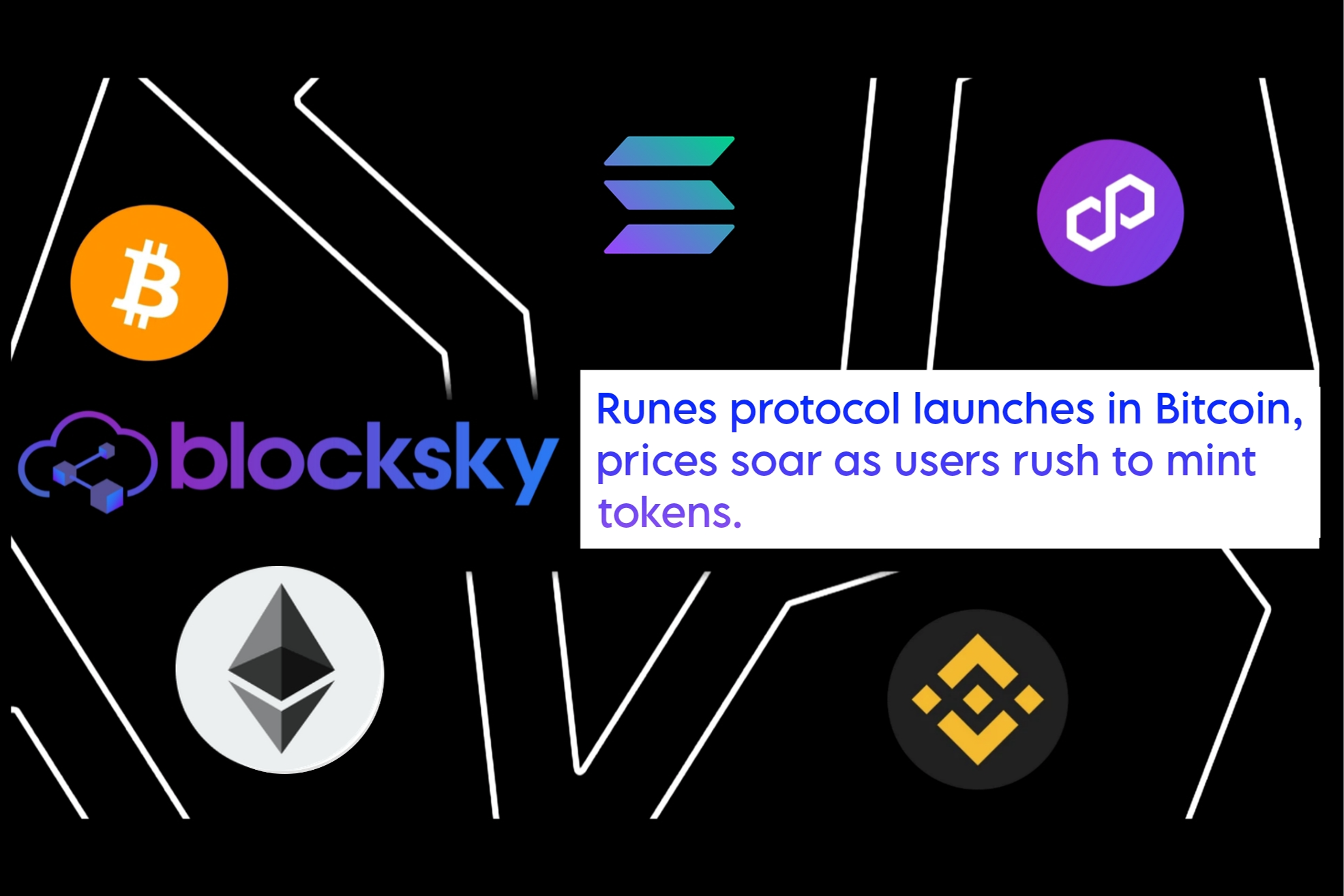2024-04-22

In the midst of the highly anticipated Bitcoin halving, it was not the halving itself that stole the spotlight, but rather the introduction of Runes, the latest creation by renowned Bitcoin builder Casey Rodamor.
Runes garnered attention not only from long-time blockchain developers who usually shun digital tokens, but also from the general crypto community.
Rodamor gained recognition for his previous protocol, Ordinals, which allowed people to "inscribe" data on the smallest units of bitcoin, known as satoshis, to create valuable assets on the Bitcoin platform.
Ordinals revitalized the developer ecosystem on Bitcoin and set the stage for Runes.
Similar to Ordinals, Runes enables users to "etch" and mint tokens on the blockchain.
However, there is a significant distinction between the two: while ordinals are "non-fungible" and unique, Runes function more like meme coins, which have recently surged in popularity in the crypto markets.
The first Runes project to be minted was Rodamor's own UNCOMMON•GOODS venture, which was announced well in advance of the halving, along with several other projects vying for a place on these coveted satoshis.
The scarcity of available satoshis made it impossible to predict which projects would secure a spot. Currently, hundreds of Runes Projects are being minted, eagerly seeking potential buyers.
Just nine blocks after the halving, Runes minters had already Paid a staggering 78.6 BTC in fees (approximately $4.95 million) to acquire the rarest tokens.
This suggests that, like Ordinals, the Runes protocol could significantly contribute to Bitcoin's growing fee economy.
Determining the potential viability of a Runes project is subjective. Being an early project to list, such as DOG•GO•TO•THE•MOON, which holds the distinction of being "Rune Number 3," is one measure of success.
However, buyers also evaluate projects based on the perceived "quality" of their ticker names.
Several Runes projects had already commenced minting before the halving, including DOG•DOG•DOG•DOG•DOG, MEME•ECONOMICS, SHORT•THE•WORLD, and PEPE•WIT•HONKERS, among many others.
Prior to the halving block being mined, potential buyers gathered in an X Space hosted by Leonidas, a respected Ordinals collector. Users and speculators engaged in discussions about which Runes to mint and traded ticker names.
During these discussions, names such as Taproot Wizards, an Ordinals project co-created by Bitcoin influencers Eric Wall and Udi Wertheimer, and a project named after Bitcoin's creator, Satoshi Nakamoto, gained attention.
At the time, the Satoshi Nakamoto project boasted over 5,000 holders who had minted approximately 19,000 tokens.
Determining the long-term value of these projects is challenging. Traders expressed uncertainty about the most valuable projects and the potential of the current Runes market.
Additionally, the number of tokens that were "pre-mined," or held in reserve by project creators for future release, is another factor to consider.
Leonidas shared guidelines prior to the halving, suggesting that projects pre-mining more than 10% of the token supply were deemed "greedy."
Some traders believed that projects with significant pre-mines would ultimately succeed, as creating a compelling meme with a 13-character limit proved to be a challenge.
Rodamor implemented this limitation to prevent "ticker squatters" from occupying ticker names indefinitely.
In the future, Runes tickers will be able to shorten their names. Within three years, there may be Runes projects with three-letter tickers.
However, the success of this strategy remains uncertain. A forward-thinking developer has already reserved ticker names, including ZZZZ, the first four-letter Rune to mint in two years, as well as ZZ and Z, the first two-letter and one-letter Runes to mint in three years. Finally, A will be the last single-character Rune to mint in four years.
Given the novelty of Runes, determining their value and potential outcomes proves to be an exciting and chaotic endeavor.
As the community navigates this new protocol, the future of Runes remains uncertain, but the enthusiasm and anticipation are palpable.